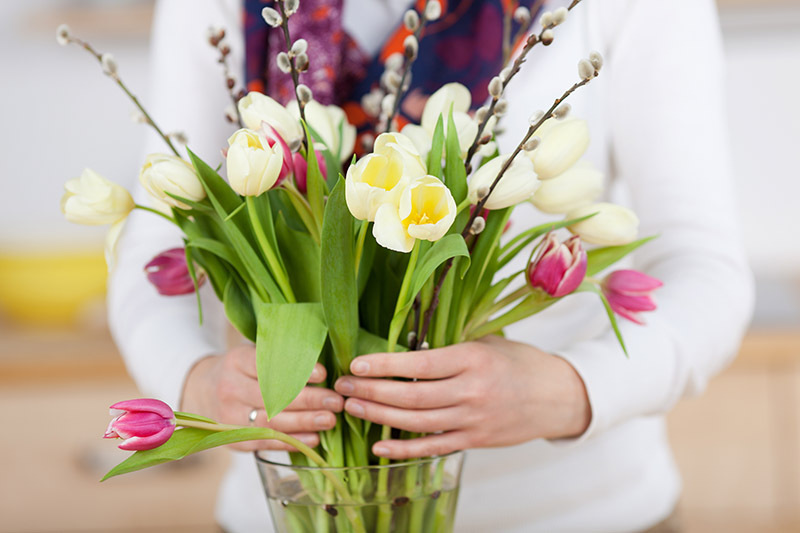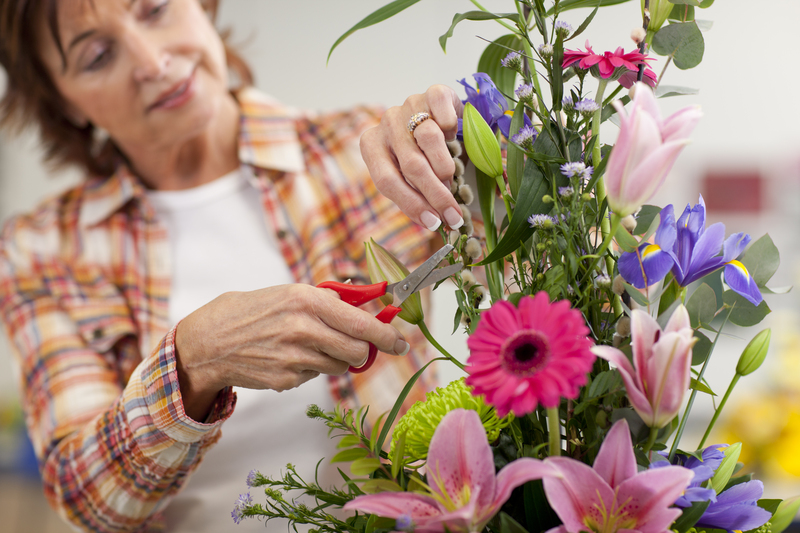Transform Your Garden with Expert Hydrangea Care
Posted on 01/09/2025
Transform Your Garden with Expert Hydrangea Care
Hydrangeas are among the most beloved ornamental plants for gardeners worldwide. With their lush, vibrant blooms and relatively easy maintenance, learning how to care for hydrangeas properly can transform your outdoor space into a breathtaking floral haven. Whether you're cultivating classic mophead hydrangeas or exploring unique panicle varieties, mastering hydrangea care tips is the secret to a flourishing and colorful garden.
In this comprehensive guide, we'll cover everything you need to know to achieve expert hydrangea care--from choosing the right variety for your landscape to pruning, fertilizing, and troubleshooting common hydrangea problems. Let's embark on a journey towards a spectacular garden transformation!

Understanding Hydrangeas: Types and Their Unique Features
Before you plant or revamp your hydrangea display, it's essential to understand the different types of hydrangeas. Each variety has its own hydrangea care requirements and growth habits, making it vital to choose the best species for your environment and design goals.
Main Hydrangea Varieties:
- Hydrangea macrophylla (Bigleaf or Mophead Hydrangeas): Known for their large, rounded flower clusters and the remarkable ability to change color based on soil pH. These are among the most popular garden hydrangeas.
- Hydrangea paniculata (Panicle Hydrangeas): Featuring elongated, cone-shaped flower heads, panicle hydrangeas thrive in full sun and are celebrated for their sturdy stems and reliable blooms.
- Hydrangea arborescens (Smooth Hydrangeas): Famous for the beloved 'Annabelle' variety, these hydrangeas produce dramatic, snowball-like flowers and tolerate cold climates surprisingly well.
- Hydrangea quercifolia (Oakleaf Hydrangeas): Named for their distinctive, oak-shaped leaves, these varieties provide four-season interest with beautiful flowers, elegant foliage, and appealing autumn color.
- Hydrangea serrata (Mountain Hydrangeas): Similar to bigleaf types but more cold-hardy, mountain hydrangeas are excellent for gardens in cooler regions.
When planning your garden, consider hydrangea sunlight needs, soil type, available space, and preferred bloom color. Each type has unique advantages that can be harnessed to transform your garden design.
Planting Hydrangeas for Maximum Impact
Proper planting is the cornerstone of successful hydrangea care. Follow these expert steps to give your new or transplanted hydrangeas the best possible start:
Choosing the Perfect Location
- Sunlight: Most hydrangeas prefer morning sun and afternoon shade. Too much shade can reduce blooming, while excessive sun can cause wilting or leaf scorch, especially in hot climates.
- Soil: Hydrangeas flourish in rich, well-draining soil high in organic matter. Amend your soil with compost or peat moss to improve texture and fertility.
- Spacing: Allow enough space for mature plants. Crowding leads to poor air circulation and can increase disease risk.
How to Plant Hydrangeas
- Dig a hole twice as wide as the root ball but no deeper.
- Carefully place your hydrangea in the hole, ensuring that the crown is level with the surrounding soil.
- Backfill with enriched soil, gently firming it around the roots.
- Water thoroughly after planting to settle the soil and hydrate the roots.
- Apply a 2-3 inch layer of mulch to help retain moisture and regulate soil temperature.
Pro Tip: The best time to plant hydrangeas is early spring or fall, giving roots time to establish before extreme temperatures set in.
Essential Hydrangea Care: Watering, Feeding, and Maintenance
Even the most robust hydrangea varieties need some TLC to reach their full potential. Here's how to maintain healthy, blooming hydrangeas year after year:
1. Watering Hydrangeas Like an Expert
- Hydrangeas need consistently moist soil, especially during their first two years or during drought.
- Water deeply--about 1 inch per week--delivering moisture directly to the root zone (avoiding overhead watering to minimize disease).
- Mulch helps to conserve moisture and buffer roots from temperature changes.
- Overwatering can be just as harmful as underwatering. Let the top inch of soil dry out before watering again.
2. Feeding and Fertilizing Hydrangeas
- Apply a slow-release, balanced fertilizer in early spring when new growth starts.
- For macrophylla and serrata hydrangeas, use a fertilizer low in phosphorus if you desire blue blooms--a high phosphorus fertilizer will keep flowers pink.
- Never over-fertilize; excess nutrients can burn roots and encourage leaf growth at the expense of blooms.
3. Pruning Hydrangeas: When and How
The best hydrangea pruning technique depends on the variety. Here's how to avoid the most common mistakes:
- Bigleaf and Mountain Hydrangeas: Prune immediately after flowering in summer. These types bloom on 'old wood'--last year's stems. Pruning in late fall or spring removes potential flower buds!
- Panicle and Smooth Hydrangeas: These bloom on 'new wood'--the current year's growth. Prune in late winter or early spring before new growth appears.
- Oakleaf Hydrangeas: Prune lightly after blooming to shape plants and remove dead stems.
Tip: Always use sharp, clean pruners and remove dead or diseased stems to encourage healthy growth.
How to Change Hydrangea Color: Soil pH Secrets Unveiled
One of the magical characteristics of certain hydrangea varieties, especially Hydrangea macrophylla, is their ability to change flower color based on the pH of the soil.
- Acidic Soil (pH below 6): Blooms tend towards blue as more aluminum is available to the plant.
- Neutral to Alkaline Soil (pH 7 or higher): Blooms are pink or even red, because aluminum is less accessible.
How to Modify Your Soil pH:
- To turn flowers blue: Add soil acidifiers such as garden sulfur or aluminum sulfate.
- To encourage pink blooms: Apply lime to the soil to raise its pH.
- Always test your soil before amending, and apply changes gradually--sudden or extreme changes can stress your hydrangeas.
Common Hydrangea Problems and Expert Solutions
Preventing Diseases and Pests
- Powdery Mildew: Increase air circulation, water at soil level, and remove infected leaves.
- Leaf Spots: Caused by fungi or bacteria; prune to improve air flow and avoid water splash on leaves.
- Aphids, Spider Mites, and Beetles: Remove with water spray or insecticidal soap if infestations are severe.
- Root Rot: Typically a result of overwatering or poor drainage. Make sure your soil and containers drain well.
Why Isn't My Hydrangea Blooming?
- Incorrect Pruning: Pruning at the wrong time is the most common cause of lost blooms.
- Cold Damage: Late frosts can kill flower buds on bigleaf and mountain hydrangeas.
- Too Much Nitrogen: Excess fertilizer causes lush leaves but few flowers.
- Deep Shade: Insufficient sunlight reduces blooming on most varieties.
By following these expert hydrangea care strategies, you'll set the stage for robust, flower-filled plants that are the envy of the neighborhood.
Creative Ways to Transform Your Garden with Hydrangeas
Hydrangeas are incredibly versatile and pair beautifully with many other plants. Here's how to integrate them into your landscape for maximum impact:
- Mixed Borders: Weave hydrangeas with perennials and grasses for a dynamic, season-spanning display.
- Hedges and Screens: Use taller varieties, like panicle hydrangeas, to form privacy hedges or garden enclosures.
- Foundation Plantings: Anchor the corners of your house or patio with showy hydrangea specimens.
- Woodland Gardens: Combine oakleaf hydrangeas with ferns and hostas for a cooling, shady retreat.
- Container Displays: Compact varieties work beautifully in large pots for patios or entryways (ensure adequate drainage).
Tip for Four-Season Interest: Choose hydrangeas with stunning fall foliage or varieties that hold their blooms through winter for ongoing visual appeal.
Advanced Hydrangea Care Techniques
Winter Protection for Hydrangeas
- For cold-sensitive varieties, cover the base with mulch or straw to insulate roots.
- Wrap the stems of your bigleaf or mountain hydrangeas with burlap or horticultural fleece if late frosts are expected.
- Remove protective covers slowly in late spring as danger of frost passes.
Dividing and Propagating Hydrangeas
- Division: Dig up and separate mature root balls in early spring or fall. Replant sections immediately for new hydrangea displays.
- Cuttings: Take 4-6 inch cuttings from new growth in spring. Dip in rooting hormone and plant in moist, sterile soil until well-rooted.

Frequently Asked Questions about Hydrangea Care
How often should I water my hydrangeas?
Newly planted hydrangeas need watering 2-3 times per week until established. Once mature, aim for about 1 inch of water per week, adjusting for rainfall and seasonal temperatures.
When is the best time to prune hydrangeas?
This depends on the variety. Prune bigleaf and mountain hydrangeas after flowering (never in spring), while prune panicle and smooth hydrangeas in late winter or early spring.
Do I need to fertilize hydrangeas every year?
Yes, a balanced slow-release fertilizer in spring is usually sufficient for most hydrangeas. Over-fertilizing can harm plants, so always follow package instructions.
Can hydrangeas grow in full sun?
Some, like panicle hydrangeas, tolerate full sun, especially in cooler climates. Most other hydrangeas prefer morning sun with afternoon shade for best results.
Create a Blooming Oasis with Expert Hydrangea Care
Hydrangeas have the power to completely transform your garden--adding drama, elegance, and color from spring through fall. By following expert hydrangea care practices shared in this article, you can enjoy vigorous, healthy plants and spectacular blooms year after year.
Choose the right hydrangea varieties for your landscape, provide optimal planting conditions, and master watering, feeding, and pruning for show-stopping results. Don't forget to experiment with bloom color and explore creative landscaping ideas for hydrangeas to create your unique outdoor haven.
Commit to expert care and your hydrangeas will reward you with one of the most stunning, enduring displays in your garden. Start transforming your garden today and let hydrangeas be the dazzling centerpiece of your personal paradise!
Latest Posts
Transform Your Garden with Expert Hydrangea Care
Challenging the ordinary with surprising facts about sunflowers
Expert Advice for Longevity of Cut Flowers in Vases







